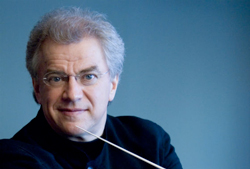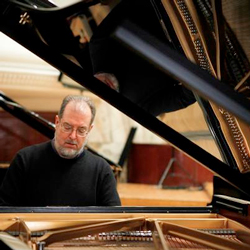by Daniel Hathaway
 Not every wind that blows into Cleveland from the North is a bone-chilling polar vortex. The boreal breeze that accompanied the 80-degree weather on Thursday evening, May 8, was a refreshing one that brought Finnish conductor (and newly reappointed Minnesota Orchestra music director) Osmo Vänskä to Severance Hall with striking symphonies by his countrymen Aulis Sallinen and Jan Sibelius in hand. The Grieg concerto, featuring frequent guest pianist Garrick Ohlsson, added another Scandinavian voice to the evening.
Not every wind that blows into Cleveland from the North is a bone-chilling polar vortex. The boreal breeze that accompanied the 80-degree weather on Thursday evening, May 8, was a refreshing one that brought Finnish conductor (and newly reappointed Minnesota Orchestra music director) Osmo Vänskä to Severance Hall with striking symphonies by his countrymen Aulis Sallinen and Jan Sibelius in hand. The Grieg concerto, featuring frequent guest pianist Garrick Ohlsson, added another Scandinavian voice to the evening.
Sallinen’s Symphony No. 1, written in 1970-1971, was a late but fascinating addition to the program. In one movement over the course of fifteen minutes, the composer obsesses in a highly organized way with the note F-sharp and its related key of F-sharp minor. Beginning statically with a viola solo (Robert Vernon) joined by second violin (Stephen Rose) that devolve into a persistent motive over cello and bass recitative-like lines, the initially cool mode grows warmer and crests with an entry by the brass into a climax topped off by a catchy rhythm on the wood block.
A striking, long-held unison (F-sharp!) blossoms into a full orchestral chord (F-sharp minor!) and leads to a frenzied mallets cadenza and striking trombone swells and ebbs over woozy string tuttis before the piece unwinds with the denouement of a persistent waltz figure. Fresh and fascinating, the symphony might have been born in the 90s rather than twenty years earlier. Vanska and the Orchestra gave it a precise and compelling reading.
At the other end of the program, Sibelius’s fifth symphony was just as tightly constructed but more epic in its dimensions. Here the composer’s obsession was with repetition of motives and thematic gestures that don’t quite ever turn into melodies — though they certainly get stuck in the ear. The prime example is the wide, striding theme the brass take up toward the end of the last movement and won’t give back (it was still playing in my head hours later).
The fifth symphony is also obsessive about wind lines doubled in thirds, which lends an agreeable sweetness to the thematic material. Persistent rhythmic ideas continue to knock at the door as well (da-da-da-DA-da). At the very end, Sibelius lines up chords like pillars with enough space in between to drive a truck through. Relentlessly driving its motives to the edge, Vanska and the Orchestra gave a purposeful and vivid account of the symphony.
Positioned as it was between two architecturally sophisticated symphonic works, the Grieg concerto came off sounding unusually lightweight on Thursday evening. Vänskä and Ohlsson took an unhurried, almost languorous ramble through the piece, pausing to admire special musical moments and lingering over expressive details. Ohlsson was in full command of the solo part, masterly in his voicing and exciting in virtuosic passages, but the concerto as a whole lacked pulse and propulsion. Nonetheless, with all those alluring themes, beauty of sound abounded. The strings were luscious after the first movement cadenza, and Michael Mayhew’s second movement horn solo was exquisite.
Published on ClevelandClassical.com May 10, 2014.
Click here for a printable copy of this article.




